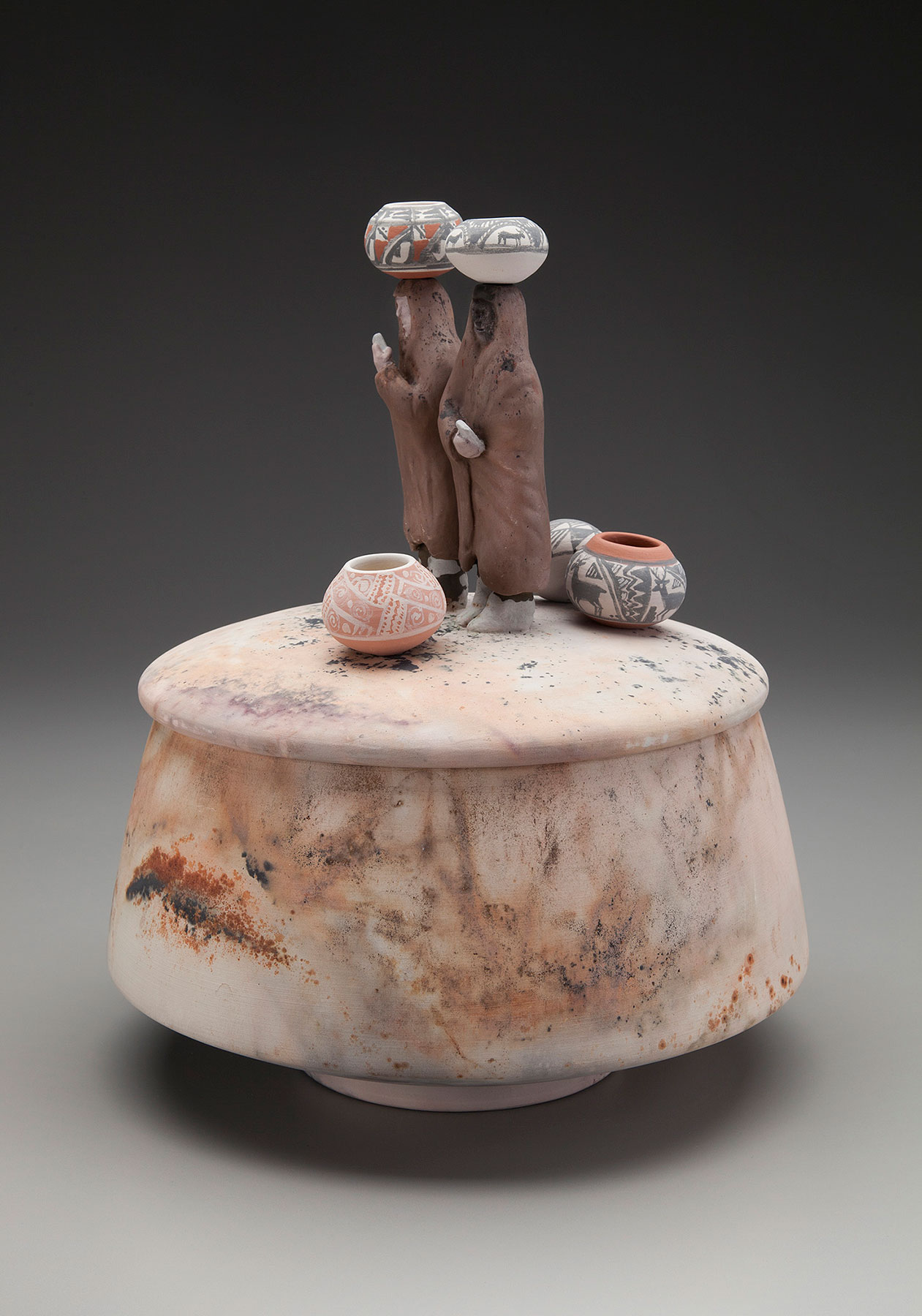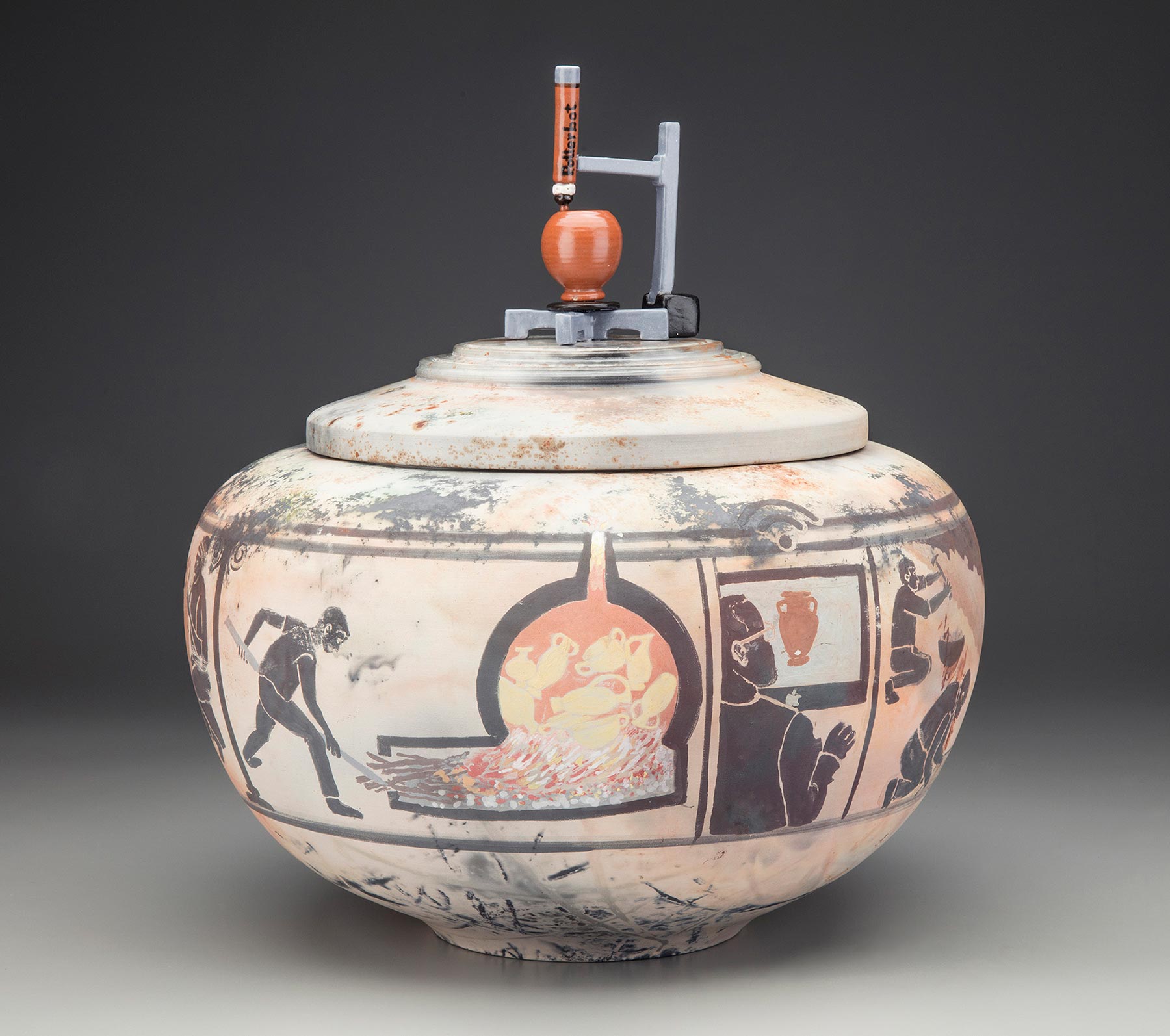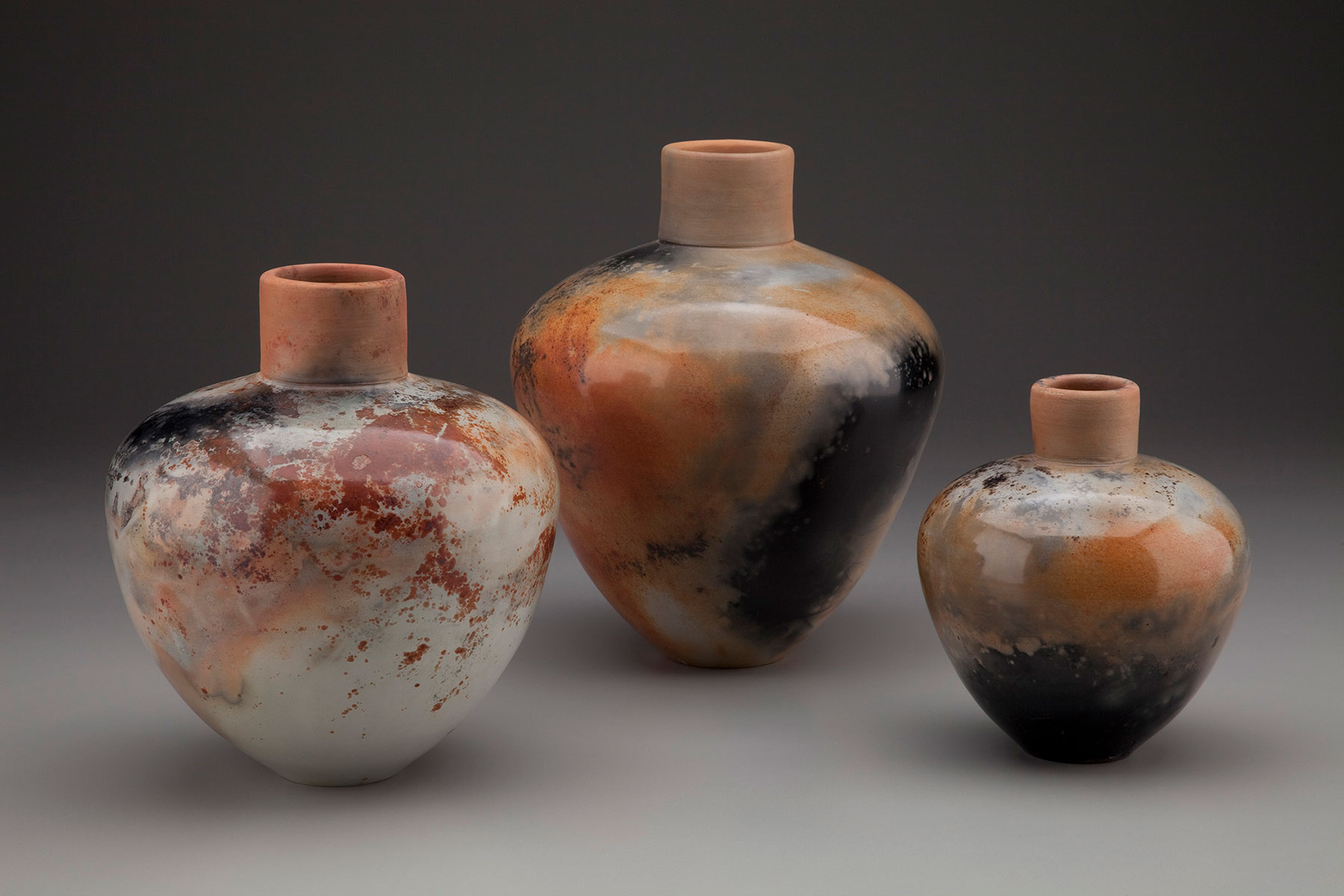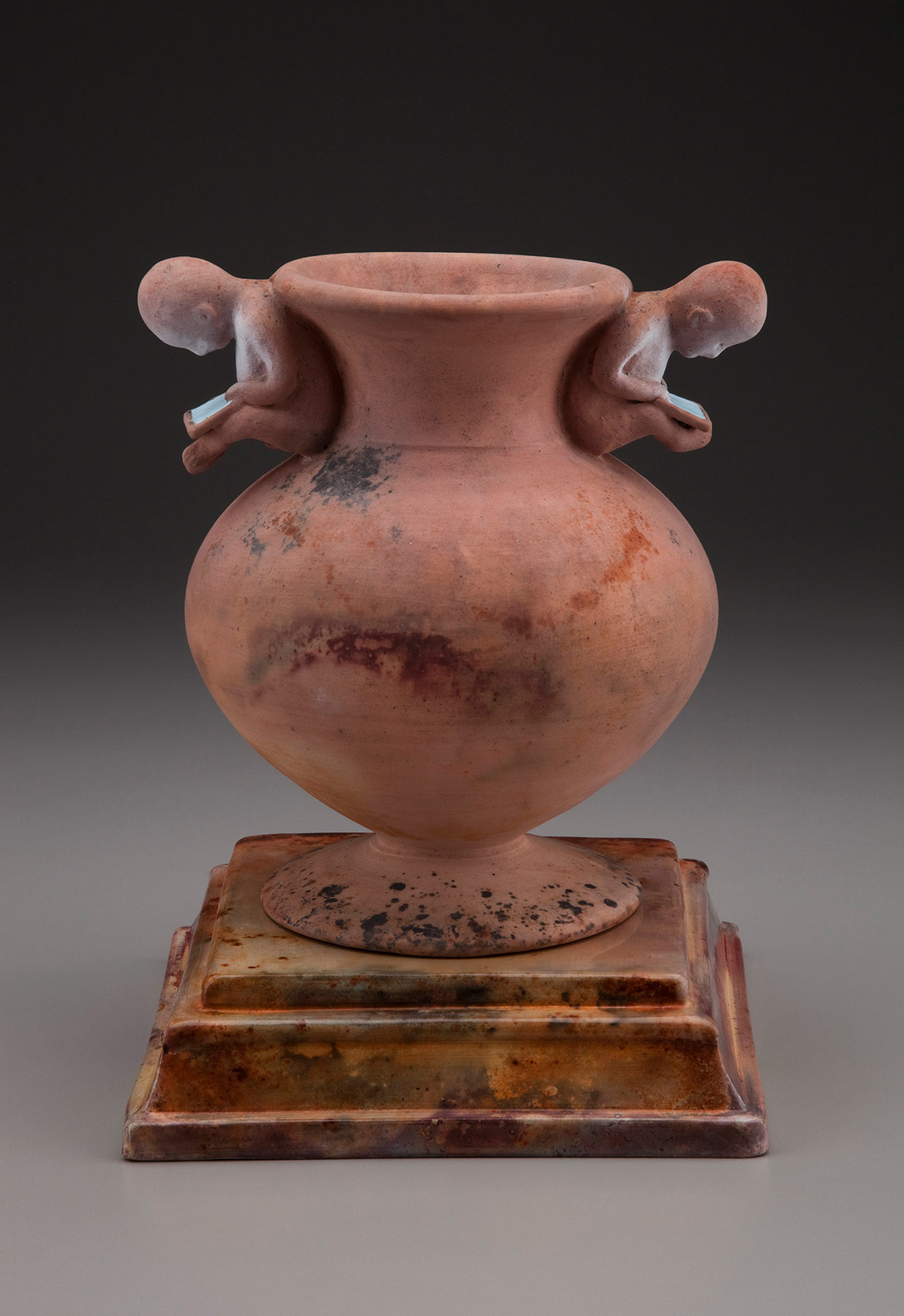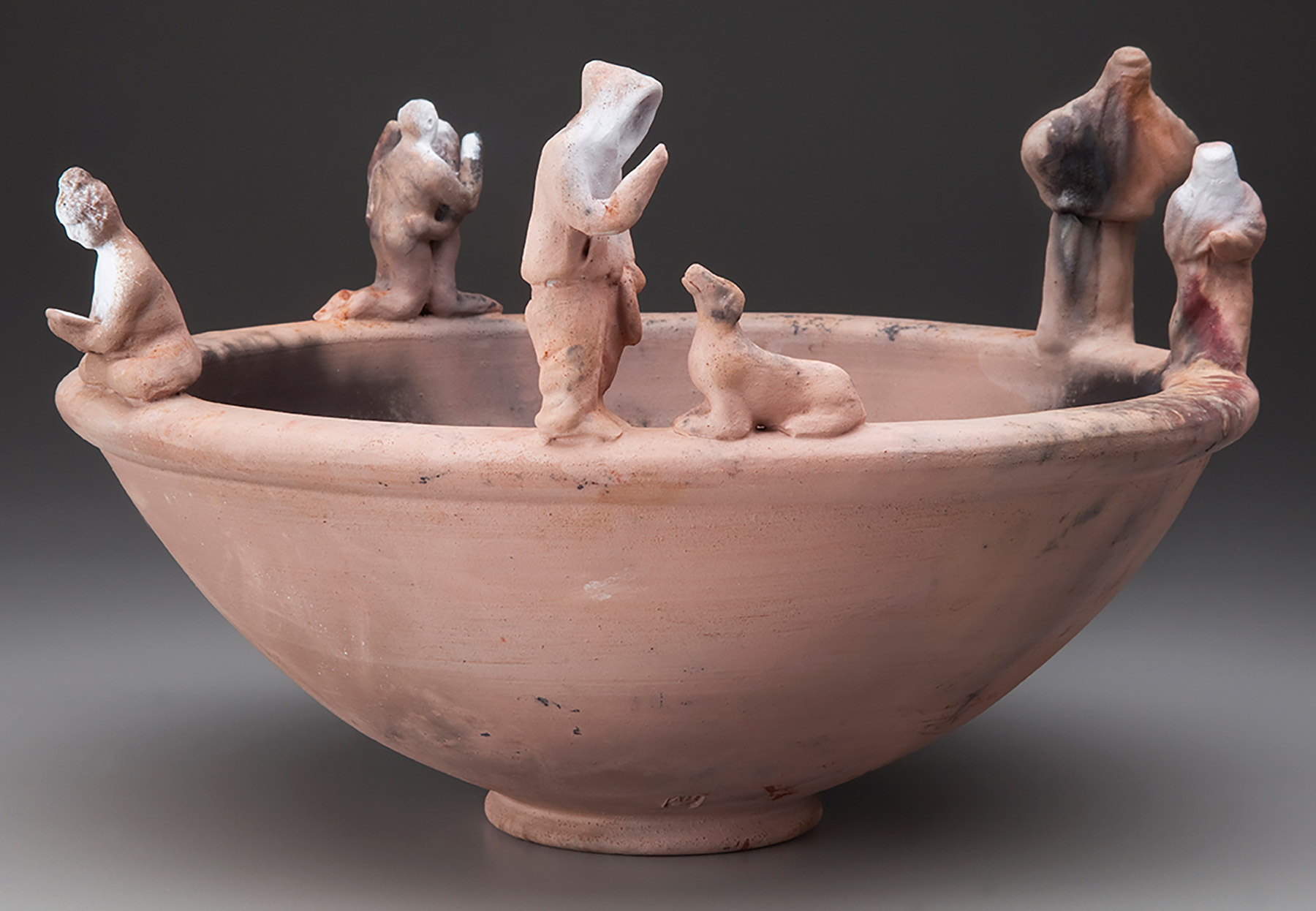
Alex Mandli, Racine
2018–19 RAM Artist Fellowship Award Recipient
Born in 1952 in Racine, Wisconsin, Alex Mandli has lived in Southeastern Wisconsin for most of his life. Though Mandli took at classes at the Charles A. Wustum Museum of Fine Arts as a child, it was a ceramics class in his first year of college at the University of Wisconsin–Oshkosh that really sparked his interest in pottery. There he studied under ceramics professor Paul Donhauser and with ceramicist Warren MacKenzie, who was an artist-in-residence there briefly.
After completing his BA in Art Education at the University of Wisconsin–Parkside, Mandli taught in area schools on and off until 2011. In 1978, he established his first studio in Kenosha, moving to his current home and studio in Racine in 1988. After working intermittently over twenty years with ceramics professor Phil Powell at Carthage College, he earned his master’s degree in 2004.
Over his 40 years as a potter, Mandli has received two Wisconsin Arts Board Grants as an artist-in-residence, has participated in the Smithsonian Craft Show multiple times, and has shown his work in exhibitions and galleries both nationally and internationally.
Artist Statement
My iTalianate work started with a trip to Italy in 2013. I was fascinated by Italy’s history, art, landscape, and architecture, but also by the colors and pottery forms by anonymous artisans. After visiting the studios of two Italian ceramic artists, Franco Balducci and Marino Moretti, I began using iron oxide to create antique surface decoration.
I remembered an ancient bowl with human figures on the rim that I had seen in Florence. The simple beauty of that bowl led to the second defining characteristic of this series—figures that represent the over-connectivity of living in the digital age. Through this work, I question, comment, and poke fun at humans tethered to their devices and the resulting changes in social behavior. In essence, these ceramic works are three-dimensional editorial cartoons. The name “iTalianate” blends an existing adjective with the lowercase “i” common to a certain technology company’s products.
My iTalianate Series integrates the appearance of ancient objects with the iconography of modern technology in a way that links the past, present, and future.
Alex Mandli, Racine
2018–19 RAM Artist Fellowship Award Recipient
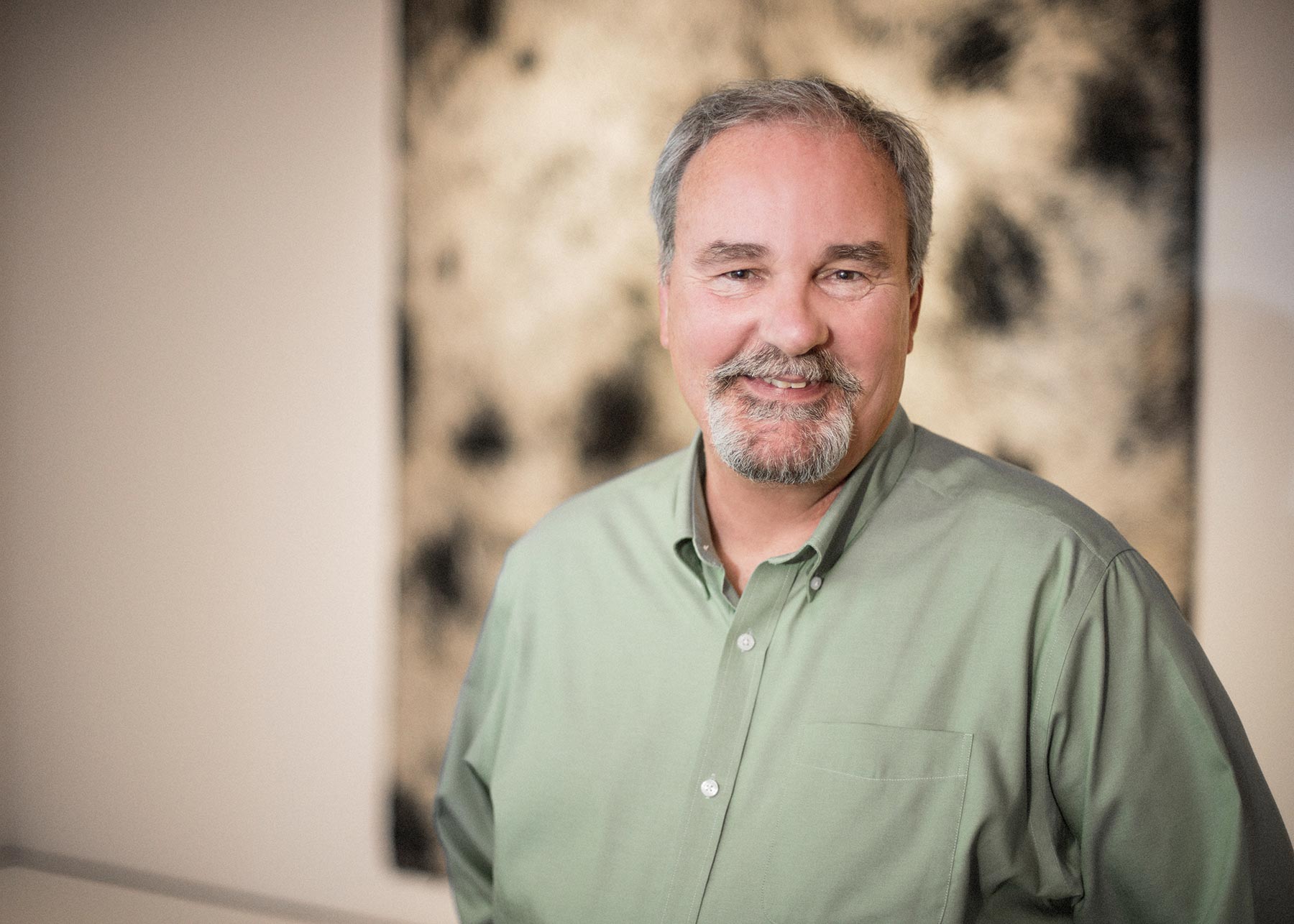
Photography: Camela Langendorf, Varitay Studios
Born in 1952 in Racine, Wisconsin, Alex Mandli has lived in Southeastern Wisconsin for most of his life. Though Mandli took at classes at the Charles A. Wustum Museum of Fine Arts as a child, it was a ceramics class in his first year of college at the University of Wisconsin–Oshkosh that really sparked his interest in pottery. There he studied under ceramics professor Paul Donhauser and with ceramicist Warren MacKenzie, who was an artist-in-residence there briefly.
After completing his BA in Art Education at the University of Wisconsin–Parkside, Mandli taught in area schools on and off until 2011. In 1978, he established his first studio in Kenosha, moving to his current home and studio in Racine in 1988. After working intermittently over twenty years with ceramics professor Phil Powell at Carthage College, he earned his master’s degree in 2004.
Over his 40 years as a potter, Mandli has received two Wisconsin Arts Board Grants as an artist-in-residence, has participated in the Smithsonian Craft Show multiple times, and has shown his work in exhibitions and galleries both nationally and internationally.
Artist Statement
My iTalianate work started with a trip to Italy in 2013. I was fascinated by Italy’s history, art, landscape, and architecture, but also by the colors and pottery forms by anonymous artisans. After visiting the studios of two Italian ceramic artists, Franco Balducci and Marino Moretti, I began using iron oxide to create antique surface decoration.
I remembered an ancient bowl with human figures on the rim that I had seen in Florence. The simple beauty of that bowl led to the second defining characteristic of this series—figures that represent the over-connectivity of living in the digital age. Through this work, I question, comment, and poke fun at humans tethered to their devices and the resulting changes in social behavior. In essence, these ceramic works are three-dimensional editorial cartoons. The name “iTalianate” blends an existing adjective with the lowercase “i” common to a certain technology company’s products.
My iTalianate Series integrates the appearance of ancient objects with the iconography of modern technology in a way that links the past, present, and future.
Interview with the Artist, January 2019
Would you please describe your work—what materials you use; what subject matters you explore?
Throughout my career as a potter, my work has evolved through a number of series and themes. Some of them took years to play out, whereas some of them were fairly brief. To create work, I rely on playful discovery, letting curiosity lead the way.
My saggar and pit fired work seeks to perfect the very essence of making ceramics by focusing on just clay, water, and fire. The saggar firing process relies on the skill and experience I have developed over the years to create an environment of combustible materials that use the fire as a painter might use a brush.
Unexpectedly, a new series originated with a 2013 trip to Italy. Like many travelers, I was fascinated by Italy’s history, art, landscape, and architecture, but I was also intrigued by things such as colors found in the earth, tufa stone, and pottery forms by anonymous artisans. After visiting the studios of two Italian ceramic artists, I began to experiment with iron oxide from that region, using it to create an antique surface decoration when combined with my existing firing techniques. I remembered a bowl with human figures walking on the rim that I had seen in Florence and that led to my adding modern, technology-addicted figures to more recent pieces.
For the first time in my career, I began working on two series at the same time with the iTalianate series as a side project to my saggar fired work. By 2018, after creating more than 30 iTalianate pieces, I decided it was time to share the series with the outside world. Four pieces from this series have been exhibited exclusively at RAM’s Wustum Museum and none of the work has been for sale. My iTalianate Series integrates two very different inspirations—ancient objects that might have been part of an archaeological dig and figures that represent the new reality of over-connected humans living in the digital age. The name “iTalianate” blends a word that means Italian in appearance or character with the lowercase “i” common to a certain technology company’s products.
The RAM Artist Fellowship Exhibition at Wustum will be the first time my iTalianate Series has been shown together. When viewers enter the gallery, their first impression may be that they are seeing ancient artifacts, but if they take the time to look carefully, they will discover that the work has a deeper meaning—namely, technology’s effect on us.
How often are you in your studio? Do you work outside of your studio much or at all?
Since my studio is only a few steps from my kitchen, I am happy to spend time in my studio every day. I have not worked outside my studio since I retired from teaching in 2011. I feel fortunate to be able to devote all my time and energy to my studio work.
What inspires you most these days? But also what do you go to bed thinking about most nights?
In my studio hangs a quote by Chuck Palahniuk: “We all die. The goal isn’t to live forever, the goal is to create something that will.” Many people want to leave behind a legacy of their time on earth. As a potter, that legacy is my body of work. The reality of my own mortality keeps me focused on my creative endeavors.
Why the RAM Artist Fellowship? Since we are midway through the process, can you assess how you are feeling at this point? Are you where you thought you would be? Have your plans changed since the fellowship year started?
For me, the RAM Artist Fellowship is validation as an artist in the Racine/Kenosha community. I have been interested in the fellowship for a number of years, but only recently became eligible to apply for it. From my perspective, the RAM Artist Fellowship recognizes past work and encourages me to continue to pursue new work. I am extremely pleased and grateful that my studio work is being supported by RAM via the fellowship grant from the Osborne and Scekic Foundation.
At this point, there are almost 40 pieces in my iTalianate series and I feel comfortable that a good exhibition can be selected from the completed work. In addition, I have about 10 ideas for new pieces that will not be completed in time for this exhibition.
I am where I thought I might be at this point in the Fellowship. Since receiving it, my work has become larger, more complicated, and more decoratively detailed. The work has changed, but my plans have not. I am looking forward to working with the RAM curatorial staff to select the pieces that will be included in the RAM Artist Fellowship exhibition at Wustum Museum.
Sample of Work
Click/tap an image for more information
Stay in Touch
The Racine Art Museum and RAM’s Wustum Museum work together to serve as a community resource, with spaces for discovery, creation, and connection. Keep up to date on everything happening at both museum campuses—and beyond—by subscribing to our email newsletter:


